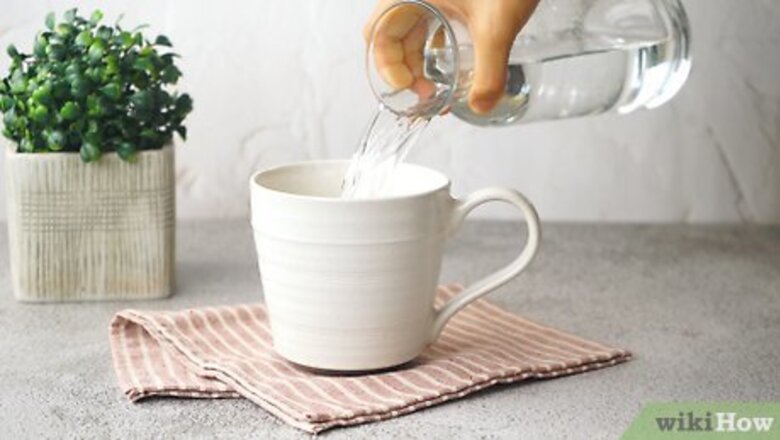
views
X
Research source
, there are precautions to help boil the water safely.
Prep time: 1 minute
Cook time: 1-3 minutes
Total time: 2-4 minutes
Boiling Water Safely
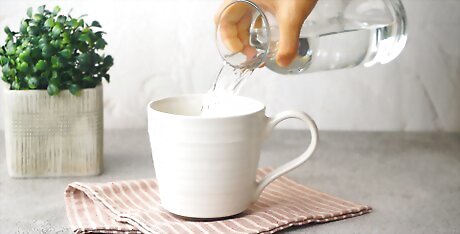
Pour the water into a microwave-safe cup or bowl. Boiling water with a microwave is remarkably easy. To start, pour the water into a container made of the microwave-safe materials listed above. Make sure the container is not sealed shut. A buildup of hot steam can cause a harmful explosion.

Place a clean, microwave-safe object in the water. Next, put a non-metallic object such as a wooden spoon, a chopstick, or a popsicle stick in the water. This prevents a dangerous problem called "super-heating" by giving the water something to form bubbles on. Super-heating occurs when water in the microwave heats water past its boiling point and the water is unable to form bubbles because there are no nucleation sites (essentially rough spots for the bubbles to form on). As soon as the water is disturbed or a nucleation site is introduced, the built-up superheated water forms steam very quickly, causing a small explosion of boiling water. If you don't have any non-metallic objects to put in your water, use a container that has a scratch or chip on the interior surface. This will act as a nucleation site to help the water bubble.
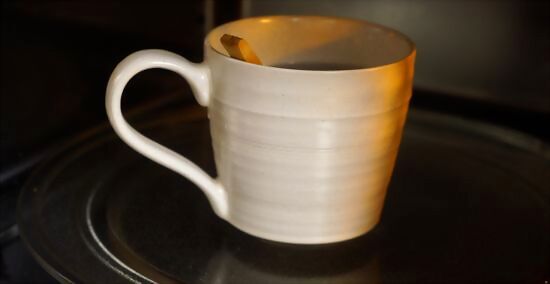
Put the water in the microwave. Heat in short (e.g., no more than one and a half minute) intervals, stirring regularly until the water is steaming. Even if these steps are followed, bubbling may not be obvious as it would be on the stove. The most accurate way to ensure the water is boiling is to use a thermometer. At sea level, water boils at (212° F; 100° C); this temperature decreases at higher altitudes. If you're using a container that holds heat well (like a glass or ceramic one), be careful when you take the water out of the microwave to stir it. Use a towel or potholder to protect yourself from burns as you handle it.

To sterilize water, keep it boiling. If you're boiling water to purify it, heat it in the microwave long enough to kill the microorganisms. The Centers for Disease Control and the Environmental Protection Agency recommend boiling the water for at least one minute, or 3 minutes at altitudes above 6,562 feet (>2000 m).
Avoiding Superheating Hazards (More Tips)

Don't heat the water for excessively long stretches. If, after reading the advice in the section above, you're worried about a superheating accident when you try to boil water, don't worry — there's more you can do to keep yourself safe. For instance, perhaps the single biggest thing you can do to avoid the risk of superheated water is to not heat it for long periods of time. If your water isn't heated past its boiling point, it can't become superheated. The exact amount of time you'll want to limit your heating sessions to can vary based on the strength of your microwave. To be safe, try limiting your heating to a single one-minute segment at first. Based on how hot the water gets from this first heating attempt, you can adjust your next one accordingly.

Avoid extremely smooth containers. For the same reason that it it's a good idea to add something non-metallic to your water or to use a container with scratches in it, it's a bad idea to use perfectly smooth containers. Examples of these can often include new, pristine glass and ceramic bowls, though a variety of other materials can also be smooth enough to cause problems. Instead, use an older, more worn container or one with visible scratches at the bottom — these will create nucleation sites for bubbles to form.
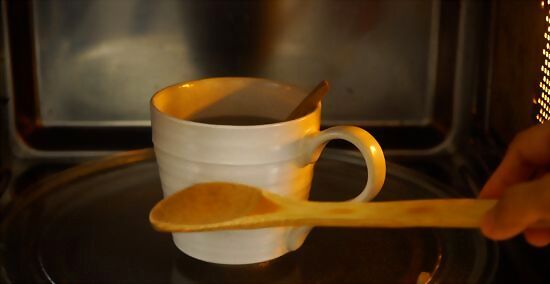
Carefully tap the side of the container when it finishes heating. Once you believe you've heated your water long enough to get it hot, check for superheating by firmly tapping on the side of the container before you take it out of the microwave. Ideally, this should be done with a long tool to protect your hands. If the water is superheated, tapping the container can cause it to suddenly "burst" over the top. This may spill water into the microwave, but since you haven't removed it yet, you should avoid any burns.

Stir the hot water with a long object while it is in the microwave. Still not sure whether the water is superheated or not? Stir it with a long rod or stirring stick to know for sure. Introducing an object and disturbing the water gives it nucleation sites to form bubbles — if it is superheated, it will rapidly burst or boil over. If it doesn't, congratulations! Your water is safe.
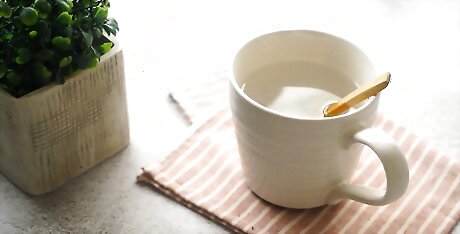
Keep your face away from the container until you are sure it is safe. This may seem like it goes without saying, but it's important not to put your face anywhere near water that you think may have even a tiny risk of being superheated. Most injuries from superheated water result when a person removes the water from the microwave and looks into the container — a sudden burst of superheated water at this point can cause serious burns on the face and even permanent vision damage in the worst of cases.

















Comments
0 comment